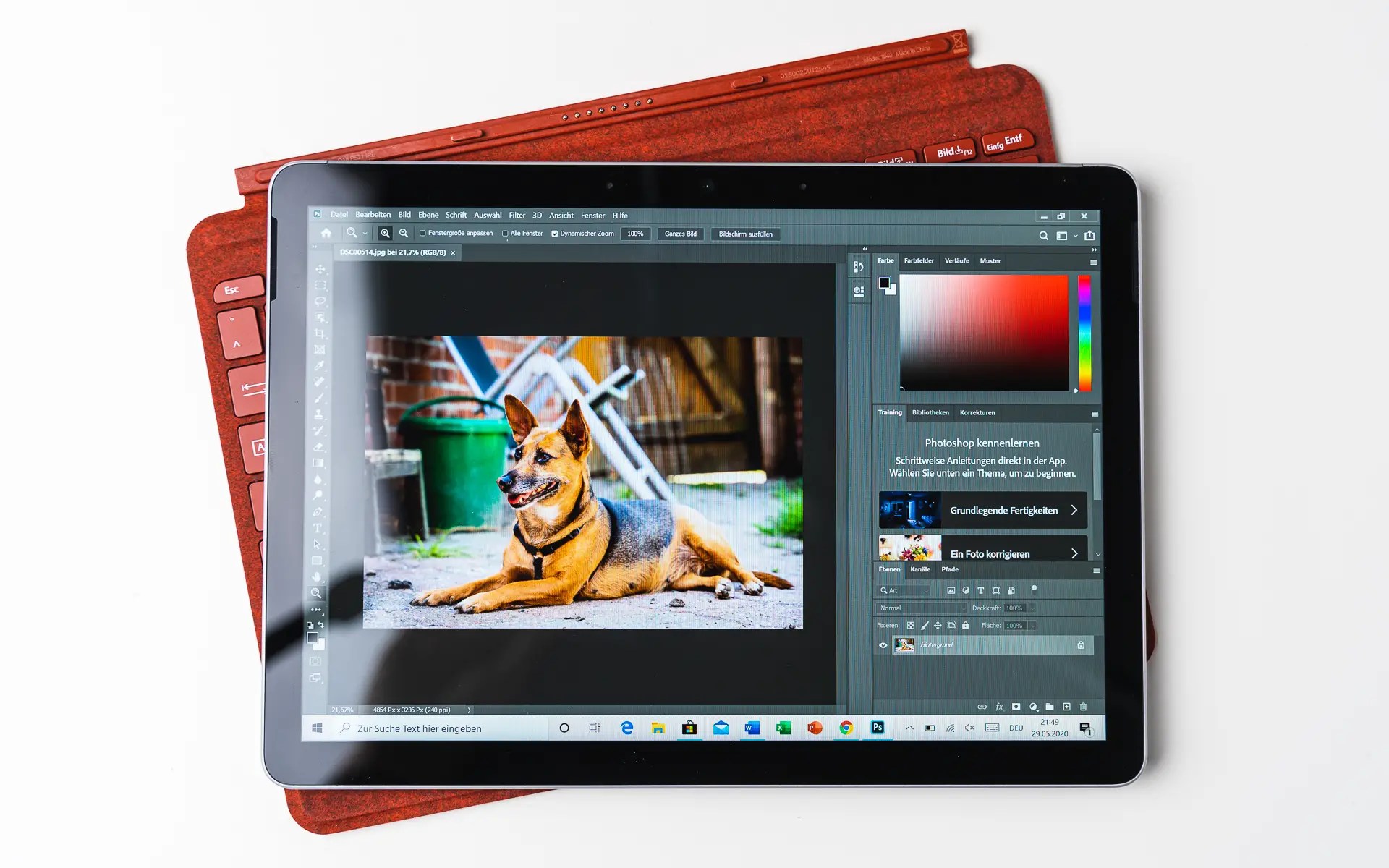
Setting Up Your Android Tablet
Before diving into mobile Photoshop, ensure your Android tablet is ready for optimal performance. Follow these steps:
Hardware Requirements
- Processor: A recent-generation processor with at least 2GB of RAM is recommended. More powerful processors provide smoother experiences.
- Storage: Ensure ample storage space. The app is small, but projects and files require room.
- Display: A high-resolution display with good color accuracy is essential for detailed work and accurate color representation.
Software Requirements
- Operating System: Ensure your Android tablet runs the latest operating system version for access to the latest features and security patches.
- Adobe Photoshop App: Download and install the Adobe Photoshop app from the Google Play Store. Subscribe to Adobe Creative Cloud or use a one-time purchase option if available.
Setting Up Your Workspace
- Open the app and sign in with your Adobe account to sync files across devices and access Creative Cloud features.
- Familiarize yourself with the interface by exploring different tools and menus. The layout is similar to the desktop version but optimized for touch input.
Basic Editing Techniques
Opening and Creating New Files
-
Opening Existing Files:
- Tap the "Open" button in the top-left corner. Select a file from your device's storage or cloud storage services like Google Drive or Dropbox.
-
Creating New Files:
- Tap the "New" button in the top-left corner. Choose from various presets such as RGB, CMYK, or create a custom preset based on your needs.
Basic Tools
-
Selection Tools:
- Use the "Lasso Tool" to select specific areas of an image by drawing around them with your finger or stylus.
- The "Magic Wand Tool" quickly selects similar colors or textures.
-
Brush Tools:
- Paint directly onto your image using various brushes and settings. Adjust brush size, hardness, and opacity for different effects.
- The "Spot Healing Brush Tool" is useful for removing blemishes or imperfections from portraits.
-
Adjustment Tools:
- Fine-tune your image's brightness, contrast, saturation, and more.
- Use the "Levels" tool to adjust the black point, white point, and midtones for better contrast control.
Saving and Exporting
-
Saving Files:
- Tap the "Save" button in the top-right corner. Choose between saving as PSD, JPEG, PNG, or other formats depending on your needs.
-
Exporting Files:
- For web use or social media sharing, use JPEG or PNG formats.
- To export layers separately or preserve layers for further editing on another device or software platform like Lightroom or Illustrator, save as PSD.
Advanced Techniques
Working with Layers
-
Creating Layers:
- Tap the "New Layer" button at the bottom of your screen. Duplicate existing layers by tapping them twice quickly.
-
Merging Layers:
- Select all desired layers, then go to "Layer" > "Merge Down" to merge multiple layers into one without losing any data or effects.
-
Adjusting Layer Opacity & Blending Modes:
- Control how much of each layer shows up when combined with others by adjusting the opacity slider above each layer thumbnail within the Layers panel.
- Experiment with different blending modes like Multiply/Darken Only or Screen/Lighten Only for creative effects.
Using Filters & Effects
-
Applying Filters & Effects:
- Access built-in filters/effects via the "Filter" dropdown in the top-right corner. Options range from basic adjustments like Sharpen/Unsharp Masking to advanced manipulations involving Distortion/Warping techniques.
- Explore custom filters/effects available via third-party plugins/extensions compatible with Adobe Creative Cloud.
-
Creating Custom Actions:
- Automate repetitive tasks by creating custom actions via the Actions panel, accessible through the "Window" dropdown in the top-left corner.
- Record actions step-by-step, then save them for later use.
Tips & Tricks
Optimizing Performance
-
Closing Unnecessary Apps:
- Close any unnecessary apps running in the background to improve overall performance and responsiveness.
- Regularly check the running apps list via the Recent Apps button, then swipe left/right to close unwanted ones.
-
Clearing Cache Data:
- Clear cache data stored locally to free up storage space and reduce load times.
- Access Storage settings via the Settings app, then navigate to Storage > Internal Storage > Clear Cache Data.
-
Using External Stylus:
- Enhance precision and control by using an external stylus, especially for intricate details, fine lines, and curves.
- Popular brands offering high-quality styluses compatible with Android devices include Wacom Intuos Pro and Apple Pencil.
-
Taking Advantage of Cloud Syncing:
- Ensure seamless collaboration between multiple devices and platforms by enabling cloud syncing.
- Enable cloud syncing via Settings > Account > Sync Settings toggle switch.
-
Exploring Third-Party Plugins:
- Extend functionality beyond native features by using third-party plugins/extensions compatible with Adobe Creative Cloud.
- Popular plugins/extensions include Nik Collection and Skylum Luminar, offering advanced editing tools, effects, and filters.
Troubleshooting Common Issues
Text Too Small
-
Adjusting Font Size:
- Adjust font size settings via Accessibility > Font Size slider within the Settings app.
- Alternatively, use pinch-zoom gestures directly within the application interface to adjust zoom levels.
-
Battery Draining Fast:
- Close background apps, reduce screen brightness, and disable unnecessary features like Bluetooth and GPS to conserve battery life.
-
Phone Running Slow:
- Clear cache data, close background apps, and consider restarting your device to improve performance.
-
Wi-Fi Not Connecting:
- Restart your router, forget and reconnect to the Wi-Fi network, or reset network settings to troubleshoot connectivity issues.
-
Apps Crashing:
- Update the app, clear cache data, or reinstall the app to resolve crashing issues.
-
Screen Unresponsive:
- Restart your device, remove any screen protectors, or check for software updates to fix unresponsive screens.
-
Can't Hear Calls:
- Check volume settings, ensure no Bluetooth devices are connected, or clean the speaker/microphone to resolve call audio issues.
